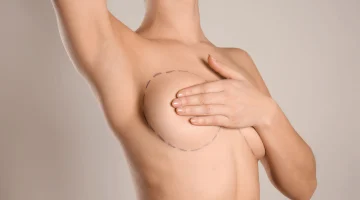A tummy tuck, also known as abdominoplasty, is a cosmetic surgical procedure designed to remove excess fat and skin from the abdomen while tightening the muscles of the abdominal wall. This procedure can significantly enhance the contour and appearance of the midsection, providing both aesthetic and health benefits. In this comprehensive guide, we will explore the purpose and objectives of tummy tuck surgery, the surgical techniques and procedures involved, preoperative preparation and evaluation, as well as the aesthetic and health benefits, and potential risks and complications.
Purpose and Objectives of Tummy Tuck Surgery
Tummy tuck surgery aims to address several issues related to the abdominal area:
- Excess Skin Removal: Abdominoplasty removes loose, sagging skin, often resulting from significant weight loss or pregnancy.
- Fat Reduction: The procedure can also eliminate stubborn fat deposits that are resistant to diet and exercise.
- Muscle Tightening: It tightens weakened or separated abdominal muscles, a condition often caused by pregnancy or substantial weight changes, leading to a firmer, flatter abdomen.
- Enhanced Contour: The overall objective is to create a smoother, more toned abdominal profile, improving both appearance and self-confidence.
Surgical Techniques and Procedures
There are several surgical techniques and procedures used in tummy tuck surgery, each tailored to meet the specific needs and goals of the patient:
- Full Tummy Tuck: This traditional method involves a horizontal incision between the hip bones and around the navel. It addresses the entire abdominal area, including muscle tightening and repositioning of the belly button.
- Mini Tummy Tuck: Suitable for patients with less excess skin and fat, this technique focuses on the lower abdomen. It requires a smaller incision and does not involve repositioning the belly button.
- Extended Tummy Tuck: This procedure is ideal for those with a significant amount of excess skin and fat extending to the flanks and lower back. It involves a longer incision to address these areas comprehensively.
- Fleur-de-Lis Tummy Tuck: This technique is used for patients with extensive skin laxity. It combines a horizontal incision with a vertical incision, forming a T-shape to allow for greater skin removal and tightening.
Preoperative Preparation and Evaluation
Proper preparation and evaluation are crucial for the success of tummy tuck surgery. Here’s what to expect:
- Medical Evaluation: A thorough medical assessment, including a review of medical history, physical examination, and relevant lab tests, to ensure the patient is in good health for surgery.
- Consultation: Discussion of the patient’s goals, expectations, and potential outcomes with the surgeon. This includes a detailed explanation of the procedure, recovery process, and any possible risks.
- Lifestyle Adjustments: Patients may be advised to make certain lifestyle changes, such as quitting smoking, avoiding certain medications, and maintaining a stable weight before the surgery.
- Preoperative Instructions: Clear guidelines on what to do in the days leading up to the surgery, including fasting instructions, medication adjustments, and arranging for post-surgery transportation and care.
Aesthetic and Health Benefits
A tummy tuck offers numerous aesthetic and health benefits:
- Improved Appearance: A flatter, firmer abdomen enhances the overall body contour, making clothes fit better and boosting self-confidence.
- Posture Improvement: By tightening the abdominal muscles, a tummy tuck can improve posture and reduce back pain caused by muscle weakness.
- Hernia Correction: The procedure can also address abdominal hernias, providing both functional and cosmetic improvements.
- Reduction of Stress Urinary Incontinence: In some cases, a tummy tuck can help alleviate stress urinary incontinence by creating a slight bladder obstruction using soft tissue near the pelvic area.
Potential Risks and Complications
Like any surgical procedure, a tummy tuck comes with potential risks and complications:
- Infection: Postoperative infections can occur, requiring antibiotics and additional treatment.
- Scarring: While scars are inevitable, their visibility can vary. Proper aftercare and following the surgeon’s instructions can help minimize scarring.
- Seroma: Fluid accumulation under the skin can occur, necessitating drainage.
- Blood Clots: There is a risk of blood clots, which can be mitigated by following postoperative care instructions and moving around as soon as it is safe to do so.
- Numbness: Temporary or permanent changes in skin sensation, particularly around the incision site, are possible.












Leave a Reply